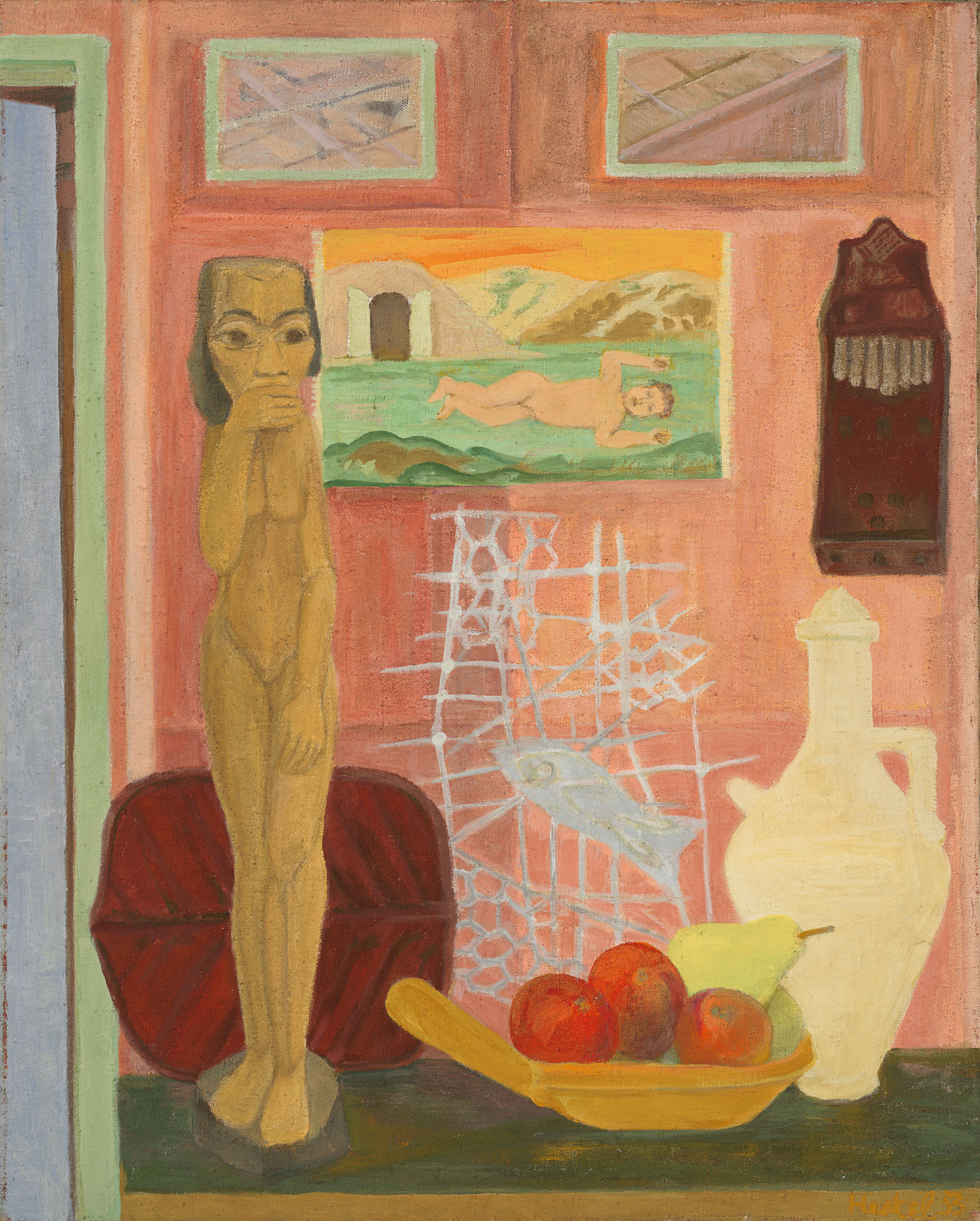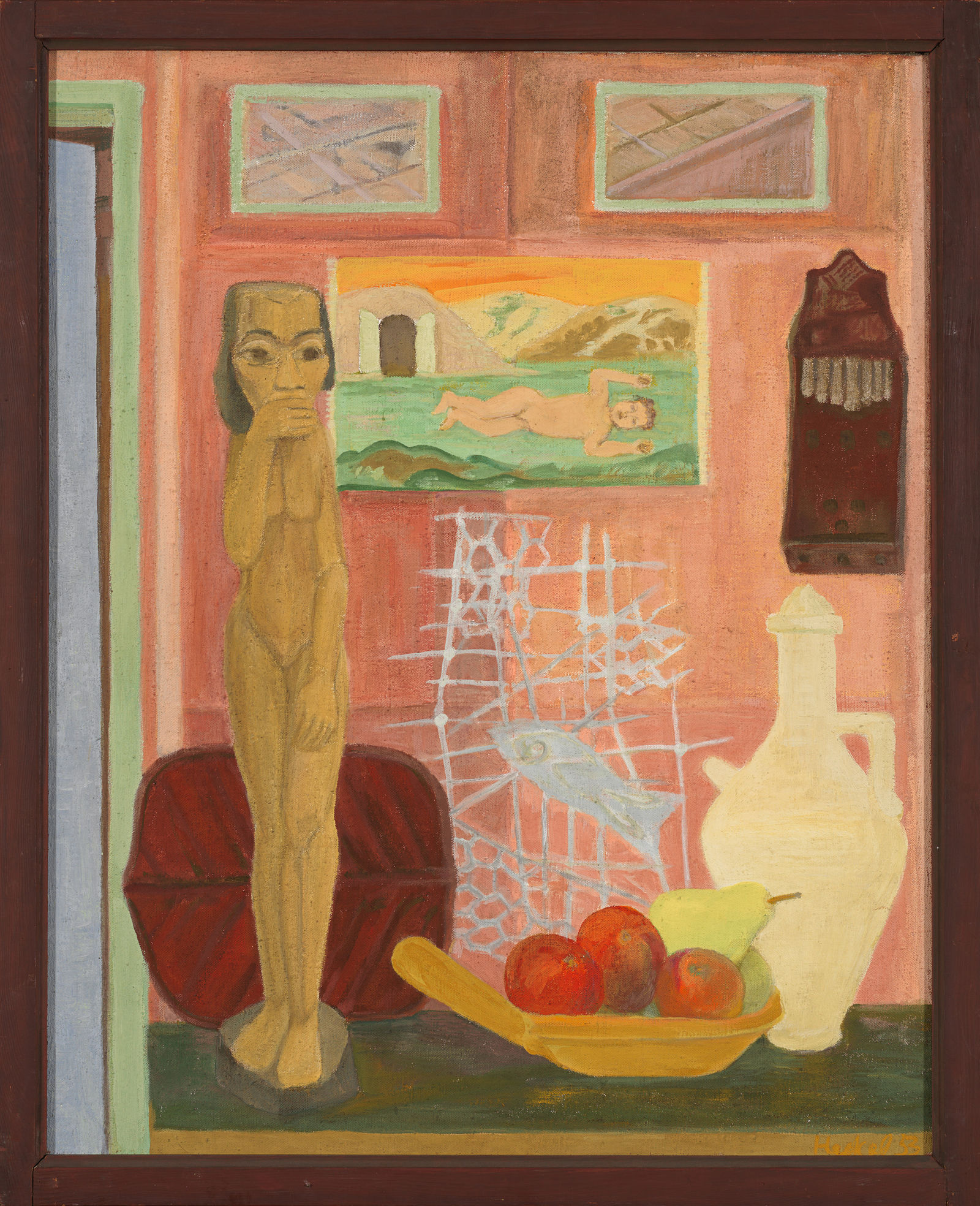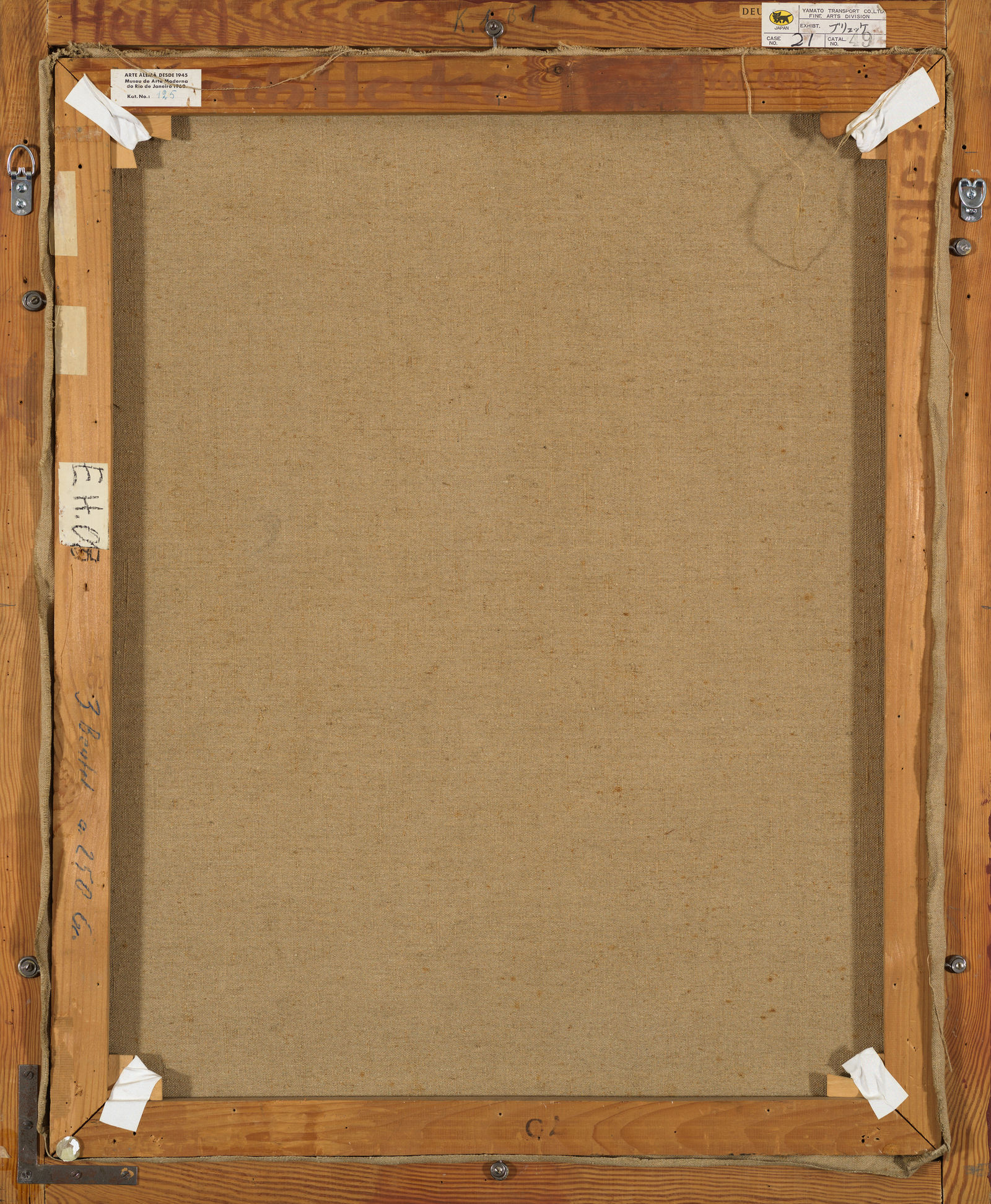


Erich Heckel
Vor der rosa Wand
Rahmenmaß 96,5 × 78,8 × 3,5 cm
Exhibitions (selection)
- How to Brücke-Museum: Ein Blick hinter die Kulissen , 2022/2023, Brücke-Museum, Berlin
Werner Düttmann. Berlin. Bau. Werk, 2021, Brücke-Museum, Berlin
Ein Künstlermuseum für Berlin: Karl Schmidt-Rottluff, Leopold Reidemeister und Werner Düttmann, 2018, Brücke-Museum, Berlin
Literature (selection)
- Erich Heckel. Gemälde, Aquarelle, Zeichnungen, Graphik aus 50 Schaffensjahren, Ausst.-Kat. Städtisches Kunstmuseum, Duisburg, Städtisches Kunstmuseum, Duisburg 1957.
Erich Heckel. Zur Vollendung des 80. Lebensjahrzehntes, Ausst.-Kat. Museum Folkwang, Essen, Essen 1963.
Werner Stein, Berlin (Hg.), Verzeichnis der zur Eröffnung ausgestellten Werke September 1967 bis März 1968, Ausst.-Kat. Brücke-Museum, Berlin 1967.
Magdalena M. Moeller (Hg.), Brücke-Museum Berlin, Malerei und Plastik. Kommentiertes Verzeichnis der Bestände, Hirmer Verlag, München 2006.
Magdalena M. Moeller (Hg.), Erich Heckel. Der große Expressionist. Werke aus dem Brücke-Museum Berlin, Ausst.-Kat. Stadthalle und Zehntscheuer Balingen, Hirmer Verlag, München 2013.
Details
Tags
Bildgattung: Stilleben
Schlagwort: Interieur, Werk im Werk
Iconclass
Hausinneres
Werkstatt, Atelier eines Malers
Früchte
Bild, Gemälde
Tablett
Behälter aus Keramik: Gefäß, Krug, Topf, Vase
Skulptur, Plastik, Bildhauerkunst
Stilleben mit verschiedenartigen Gegenständen
Inscription/Signature
Signiert unten rechts:
Heckel 53 (Signatur)
Rückseitig auf dem Keilrahmen:
Erich Heckel Vor der ... [unleserlich] (Bezeichnung)
rückseitig auf dem Rahmen:
Heckel. Karlsruhe (Bezeichnung)
Inventory Number
12/66
Catalog Number
Vogt 1953 / 3; Hüneke 1953-3

